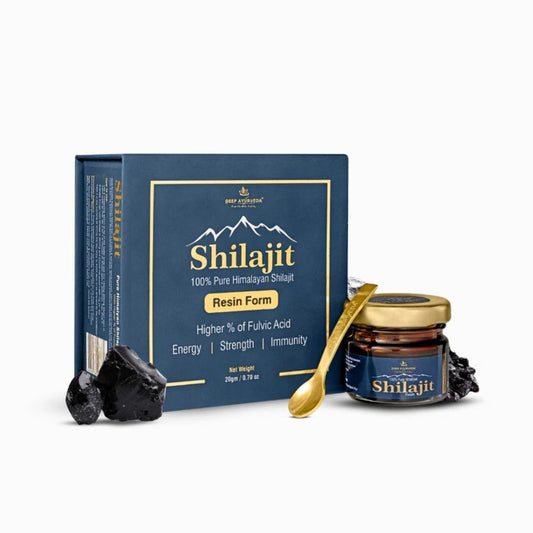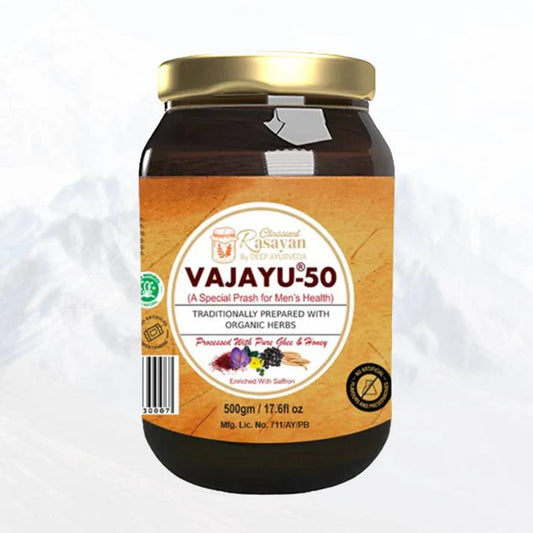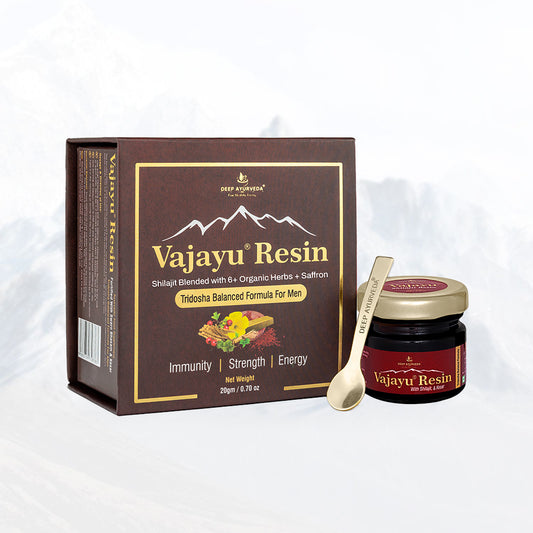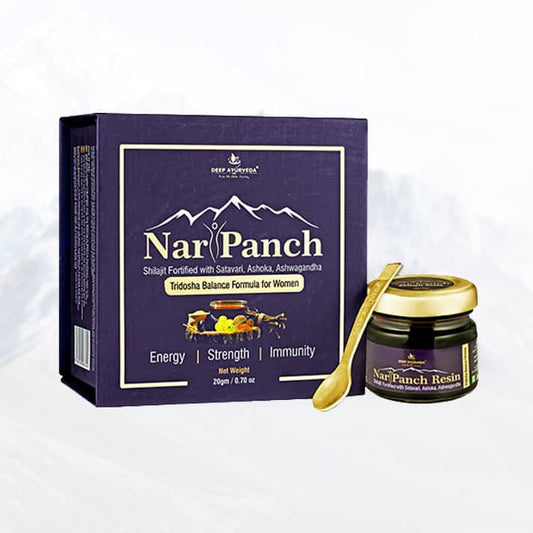The uterus, also known as the womb, is a hollow, muscular organ located in a woman's pelvis, between the bladder and rectum. It plays a central role in reproduction, menstruation, and pregnancy. In Ayurveda, the uterus is understood as a critical component in the process of conception, referred to as "Garbhashaya", and is specifically denoted as the "Kṣetra" (the field) in the four essential components necessary for conception. In this blog, we will explore the most common uterine disorders, their causes, symptoms, and treatment options—both modern and Ayurvedic.
Common Uterine Disorders in Females-
- Uterine Fibroids
- Endometriosis
- Adenomyosis
- Uterine Polyps
- Uterine Prolapse
Uterine Fibroids-

1)Modern View-
Uterine fibroids (also called leiomyomas or myomas) are non-cancerous tumors of the smooth muscle tissue of the uterus.
Types of Fibroids:
-
Submucosal fibroids: Grow into the uterine cavity.
-
Intramural fibroids: Grow within the muscular wall of the uterus.
-
Subserosal fibroids: Grow on the outer surface of the uterus.
-
Pedunculated fibroids: Grow on a stalk, either inside or outside the uterus
Causes-
The exact cause of uterine fibroids isn't clear. But these factors may play roles:
- Genetic role
- Hormonal changes
- Obesity
Symptoms-
- Heavy or prolonged menstrual bleeding (menorrhagia)
- Pelvic pain or pressure
- Frequent urination
- Constipation
- Infertility
Diagnosis-
- Pelvic examination
- Ultrasound (TVS or abdominal)
- MRI
- Hysteroscopy
Treatment-
Medical: Hormonal therapy (GnRH agonists, birth control), NSAIDs
Surgical:
Myomectomy (removal of fibroids)
Hysterectomy (removal of uterus)
Uterine artery embolization
2)Ayurveda View-
Uterine fibroids can be correlated with "Granthi", "Arbuda", or "Garbhashayagata Granthi" in Ayurveda.
Nidana (Causes):Aggravation of Vata and Kapha dosha(Excess intake of guru (heavy), snigdha (unctuous), and madhura (sweet) food)
Rasa and Rakta dhatu dushti
Apathy in diet and lifestyle
Stress and emotional imbalance
Lakshan(Symptoms)-
- Yonivedana (pain in the pelvic area)
- Atyartava (heavy bleeding)
- Yonigata guda shotha (swelling in lower abdomen or genital area)
- Garbhasrava or Vandhyatva (miscarriage or infertility)
- Basti vikshep (pressure on bladder)
Chikitsa (Treatment):
1. Shamana Chikitsa (Palliative):
- Kanchanara Guggulu
- Triphala Guggul
- Ashokarishta, Lodhra, Shatavari
-
Triphala, Punarnava,
2. Shodhana Chikitsa (Detoxification):
- Virechana (purgation)-for balancing hormones
- Basti (medicated enema) – especially matra basti of chandanbala and sahcharadi oil for heavy menses and dysmenorrhea.
-
Uttar Basti –kshar kashish oil uttar basti for lekhan (scrapping) of arbud (fibroid)
3. Local Therapies:
Yoni Pichu, Yoni Dhavana with decoctions of Triphala, Lodhra, etc.
Endometriosis-

1)Modern View-
Endometriosis is a condition where tissue that is similar to the lining of your uterus grows on other parts of your body. Endometriosis can affect various areas of the pelvic cavity and, in rare cases, even organs outside it. The most common sites of endometriosis include : Ovaries, Pelvic peritoneum, Fallopian tubes, Uterosacral ligaments, Pouch of Douglas (Recto-uterine pouch), Outer surface of the uterus and bladder, diaphragm, vagina, lungs. Endometriosis is a condition that most commonly impacts females between the ages of 20 and 40.
Causes-
The cause of endometriosis is unknown, but several theories and risk factors are associated with its development. These include Retrograde menstruation: Menstrual blood flows backward into the pelvic cavity, Genetic predisposition ,Immune system dysfunction, Hormonal imbalance (estrogen dominance),Surgical transplantation (e.g., C-section scars).
Symptoms-
- dysmenorrhea (painful periods)
- Chronic pelvic pain
- Dyspareunia (painful intercourse)
- Infertility
- Heavy or irregular menstrual bleeding
- Fatigue, digestive issues (bloating, nausea)
Modern Treatment -
- NSAIDs (for pain relief)
- Hormonal therapy (oral contraceptives, GnRH agonists)
- Surgical removal (laparoscopic excision of lesions)
2)Ayurveda View-
In Ayurveda, endometriosis, resemble "Vataja Yoni Vyapad", "Rakta Yoni", and "Arbuda" conditions. It is considered a result of dosha imbalance—mainly Vata, along with Pitta and Kapha, leading to abnormal tissue growth (dhatu vriddhi) and obstruction (srotorodha).Vitiated Vata dosha leads to displacement of endometrial tissue.,Pitta causes inflammation and pain,Kapha promotes tissue overgrowth and adhesions.
Ama (toxins) block the body channels and aggravate the condition.
Nidana (Causes) – Vāta-Prakopaka Factors:
- Excessive physical exertion like exercise and travelling in bike etc,specially during menses.
- Improper fasting or undernourishment
- Excessive sexual activity
- Suppression of natural urges
- Repeated abortions
Lakshan (Symptoms):
- Yoni Shoola (pelvic pain)
- Rakta pravritti (heavy or irregular bleeding)
- Vedana during maithuna (pain during intercourse)
- Vandhyatva (infertility)
Ayurvedic Management of Endometriosis
Shodhana Chikitsa (Purification Therapy):
- Virechana (Purgation): Eliminates Pitta and toxins from the system.
- Basti (Medicated Enema):chandanbala and sahcharadi matra basti for heavy and painful menses.
- Uttara Basti: ksharkashish oil and kumari oil can be used for scrapping (lekhan).
Shamana Chikitsa-
- Ashokarishta – Regulates menstrual cycle and reduces bleeding and pain.
- Kanchanara Guggulu – Useful for growths and masses.
- Triphala Guggulu – Detoxifying and anti-inflammatory.
- Shatavari – Uterine tonic and hormone balancer
- Lodhra,– Reduce inflammation and help as raktstambhak(homeostasis)
Adenomyosis-
Adenomyosis is a condition where the endometrial tissue (the lining of the uterus) grows into the muscular wall of the uterus (myometrium).
1)Modern View-
Causes-
Invasive Growth of Endometrial Tissue-Endometrial cells may invade the uterine muscle due to injury, surgery (like cesarean section or D&C), or naturally during menstruation.
Developmental Origin Theory-It may result from abnormal development of the uterus during fetal growth, where endometrial tissue becomes embedded in the uterine muscle from birth
Stem Cell Theory-Bone marrow stem cells may invade the uterine muscle and develop into endometrial tissue
Hormonal Influence-Estrogen is believed to play a key role, as adenomyosis is hormone-dependent and often resolves
Symptoms-
- Heavy menstrual bleeding (menorrhagia)
- Severe menstrual cramps (dysmenorrhea)
- Chronic pelvic pain
- Pain during intercourse (dyspareunia)
Diagnosis-
Transvaginal ultrasound
Treatment-
Medication:
NSAIDs for pain
Hormonal therapy (e.g., oral contraceptives, GnRH agonists)
Surgical:
Hysterectomy (definitive treatment for severe cases)
2)Ayurveda View-
In Ayurveda, Adenomyosis can be correlated with:
Granthi (nodular formations)
Asrigdar-excessive uterine bleeding
Rakta Pradar (रक्त प्रदर) – Abnormal uterine bleeding.
Rakta Yoni Vyapad
Nidana (Causative Factors):
Apathyakar ahara-vihara (wrong diet and lifestyle)
Suppression of natural urges
Overexertion or sexual indulgence during menstruation.
Atyadhik ushna tikshna ahar sevan
Lakshana (Symptoms):
Yonivedana (pelvic pain)
Atiartava (excessive bleeding)
Garbhashayashoola (uterine pain)
Chikitsa (Management):
1. Shamana-
Herbs and Ayurvedic formulations:
Ashokarishta
Dashmoolarishta
Kanchanar Guggulu
Shatavari
Lodhrasava
Chandrakala Rasa
Pradarantak Lau
Chandraprabha Vati
Patrangasava
2. Shodhana (Detoxification):
Virechana (therapeutic purgation) to balance Pitta and Rakta
Basti karma (medicated enema) –matra basti with chandanbala lakshadi tail(acts as raktstambhak)
Pathya-Apathya:
Avoid heavy, spicy, sour foods
Uterine Polyp
Uterine polyps, also known as endometrial polyps, are soft, finger-like growths that form on the inner wall of the uterus (endometrium).
Causes-
Hormonal factors appear to play a role in growth of uterine polyp
Symptoms-
Menorrhagia (heavy periods)
Intermenstrual spotting or bleeding
Postmenopausal bleeding
Diagnosis: Transvaginal ultrasound
Treatment-
Medications: Hormonal therapy
Hysteroscopic polypectomy – the standard method to remove uterine polyps
According to Ayurveda it is correlated as garbhasaygat granthi and treated same as endometriosis and adenomyosis as mentioned above.
Uterine Prolapse-
Uterine prolapse is a condition where the uterus descends from its normal position into the vaginal canal due to weakening of pelvic floor muscles and ligaments. It is more common in postmenopausal women and those who have had multiple vaginal deliveries.
Causes:
Multiple Vaginal childbirth
Aging and menopause (decreased estrogen weakens tissues)
Chronic constipation
Heavy lifting
Obesity
Degrees of Prolapse:
Grade I – Cervix drops into the upper vagina
Grade II – Cervix reaches the vaginal opening
Grade III – Cervix protrudes outside the vaginal opening
Grade IV (procidentia) – Entire uterus is outside the vaginal canal
Symptoms:
- A feeling of heaviness in the pelvis
- Bulge of tissue protruding from the vagina
- Urine retention
- Constipation
Diagnosis-Pelvic examination while standing or straining
Treatment:
- Conservative:
- Kegel exercises (pelvic floor strengthening)
- Surgical:
- Uterine suspension
- Hysterectomy (in severe cases)
2)Ayurvedic View-
In Ayurveda, uterine prolapse, known as Mahayoni, is attributed to an imbalance of Vata dosha, specifically Apana Vata, which governs downward and outward movements in the body.
Dosha Involvement:
Vata dosha (especially Apana Vata) – responsible for downward displacement
Mamsa, Asthi, Majja dhatu kshaya – tissue weakness
Lakshana (Symptoms): Yonibhramsha (feeling of something coming out of vagina)
Yonivedana (pain in vaginal area)
Adhovata (gas and bloating)
Mutrakrichra (difficult urination)
Chikitsa (Treatment)-
Yoni Dhawan with kashay dravya kwath
Yoni Avagaha with Pancavalkala Kashaya
Yoni Purana (Vaginal Packing) with Nisha, Vacha, Madanapala, Udumbara, and Ashwagandha Churna mixed with Narayana oil
Yoni pichu (This involves placing a medicated cotton swab or tampon (Pichu) soaked in herbal oils or other prescribed substances into the vagina. )with changeri ghrit
Guduchi Churna, Chandrabrabha Vati and other Vata Shamana and Rasayana drugs
Ashwagandha churn orally for mans dhatu pushti
Conclusion-
Early diagnosis and timely intervention are key to managing these conditions effectively. While modern medicine offers surgical and hormonal treatments, Ayurveda provides a holistic approach through herbal remedies, Panchakarma therapies, dietary modifications, and lifestyle corrections.
